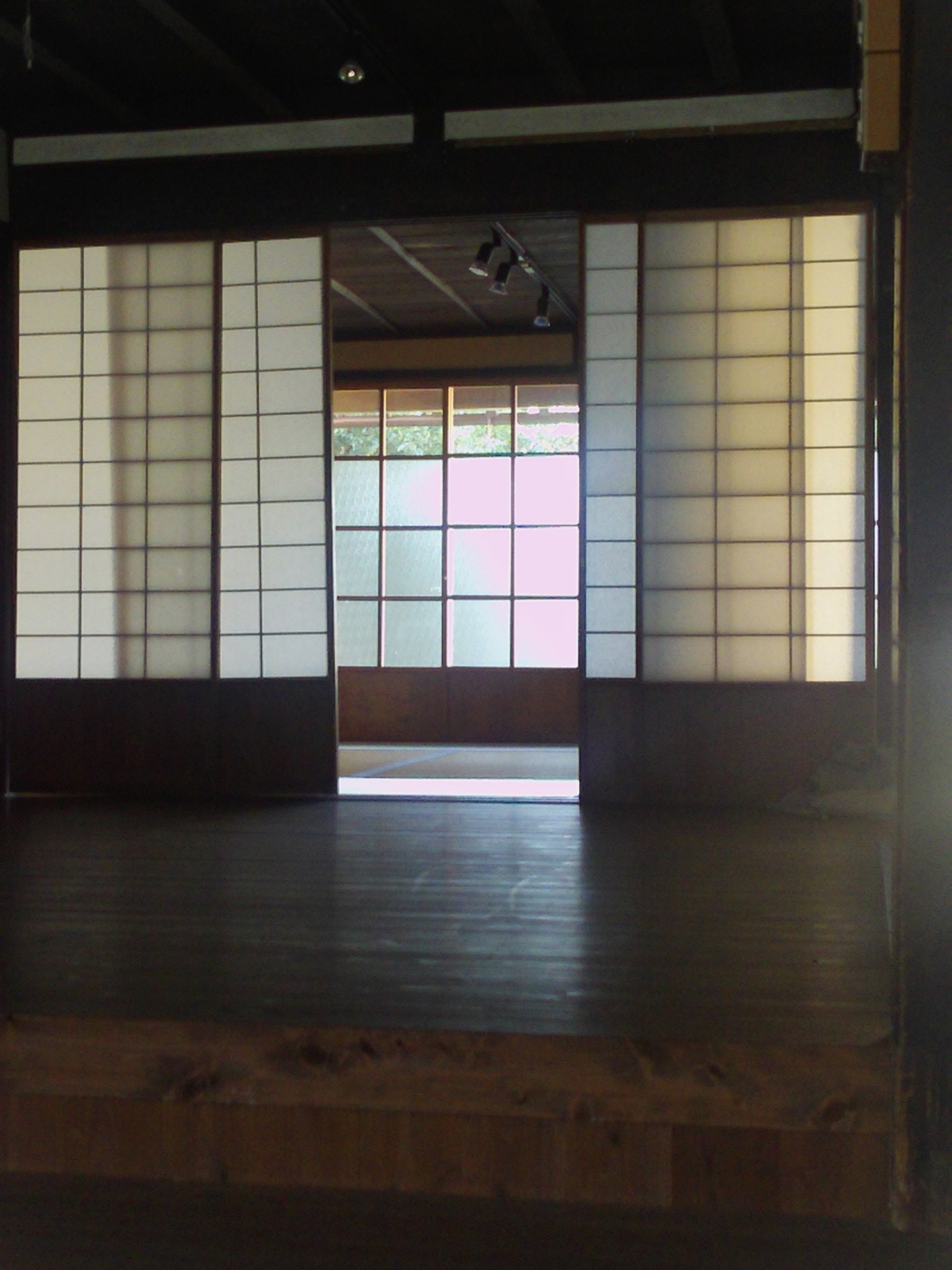
Shoji Doors with Washi Paper.
Japanese Washi paper are very unique, besides its beauty and inherent strength it has qualities of warmth, softness, eloquence and poetry. Handmade Japanese paper making requires hard physical strain while paying closest attention to details. Washi paper are handmade in Mino city in the Gifu Prefecture (about one and a half hour from Nagoya). All the different stages in making Washi are done by hand. Each individual paper maker in the old days will harvest and pulp their own materials. This add to a slight variances and distinguish characteristics in the paper depending from which area the raw materials are harvested. The materials for the paper are 100% natural from a tree called “Naso Kouza” and “Tororoaoi“.

1 year old Kozo tree (mulberry)
The Kozo is the bark from the Naso Kouza that is stripped from a one year old tree in the dead of winter. No deforestation is involved since the trees are cut a few inches from the base and regrow for the next years harvest. Kozo is a low growth deciduous tree of the mulberry family and at full growth the branches reach over 3 meters. Easy to cultivate and an annual crop can be obtained. Once the bark is stripped from the tree and tied straight the black bark is peeled off until only the white flesh are left. The inner bark has long fibers and are bound together by a substance called pectin. The next step is to remove this substance so that we only have the fibers left.
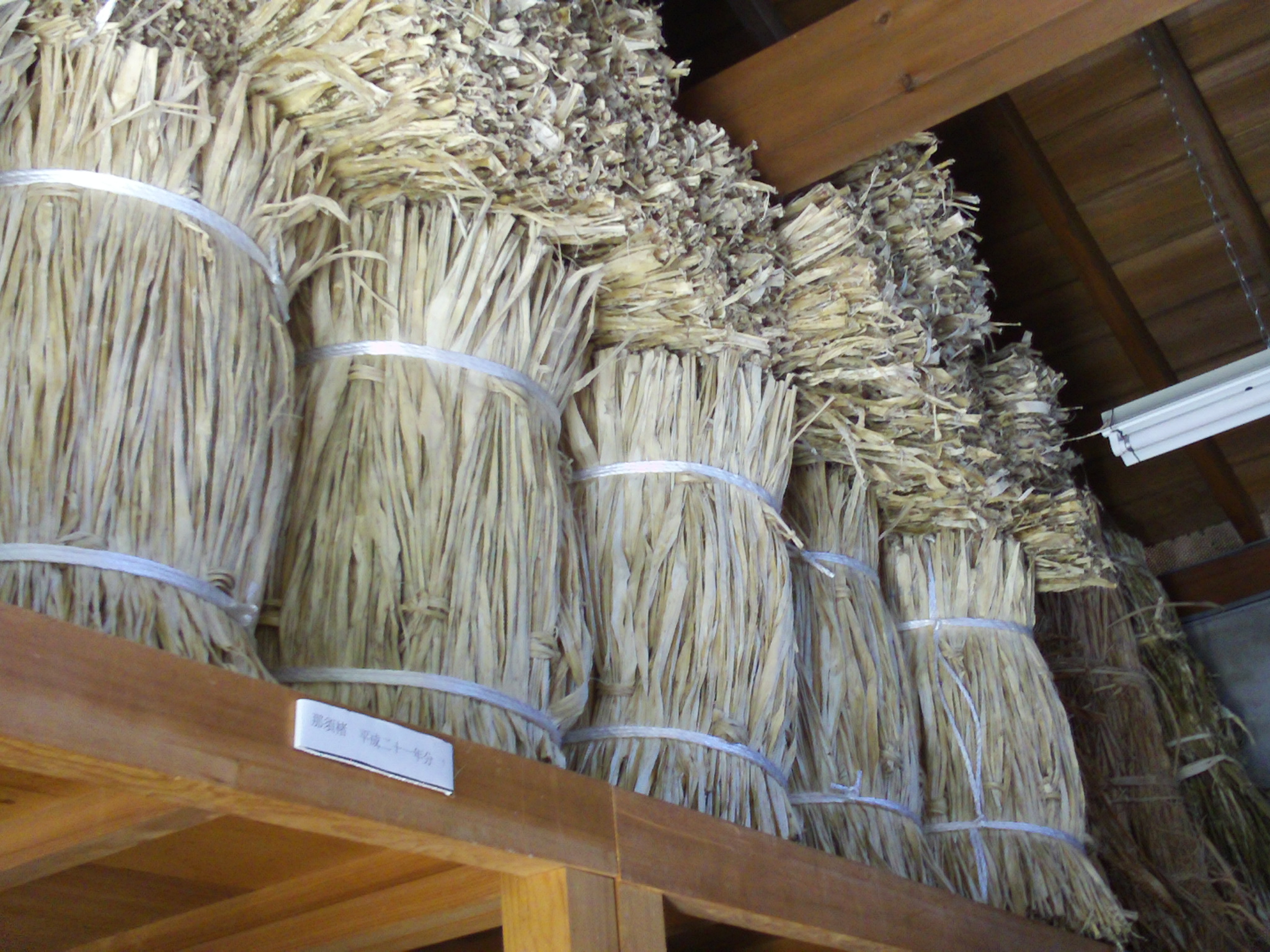
Kozo inner bark
The bark is submerged in water for up to three days and all soluble material are washed away. This process used to be done in the Nagara river where the enzymes in the water and the sunlight will naturally bleach the fiber. That is why you will find all paper making towns in Japan next to rivers. Clean cold water are essential to paper making and you need a LOT of water to make Washi. The Mino area has very high quality water which is the secret to superior paper. Today however these are done in special pools.
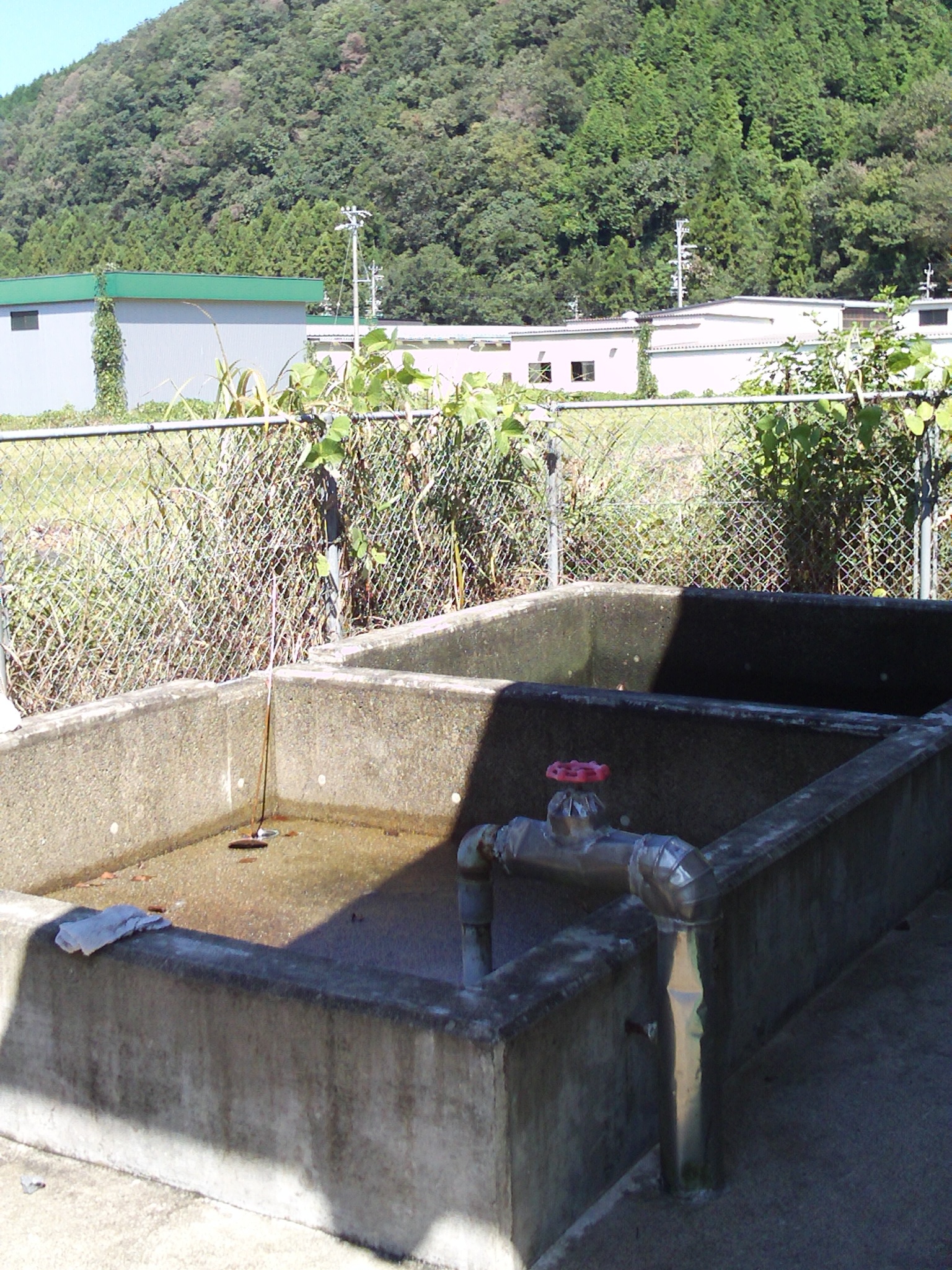
Soaking of fibers in baths instead of the river
Next the Kozo are boiled in an alkaline chemical. These chemicals are caustic soda, sodium carbonate or slaked lime. The bark needs to boil for 2 hours, after the mix reach a boiling point the pectin will dissolve and become pectic acid which is water soluble. The remaining fiber will be rinse for another 24 hours and we are left with beautiful long fibered bleached Kozo.
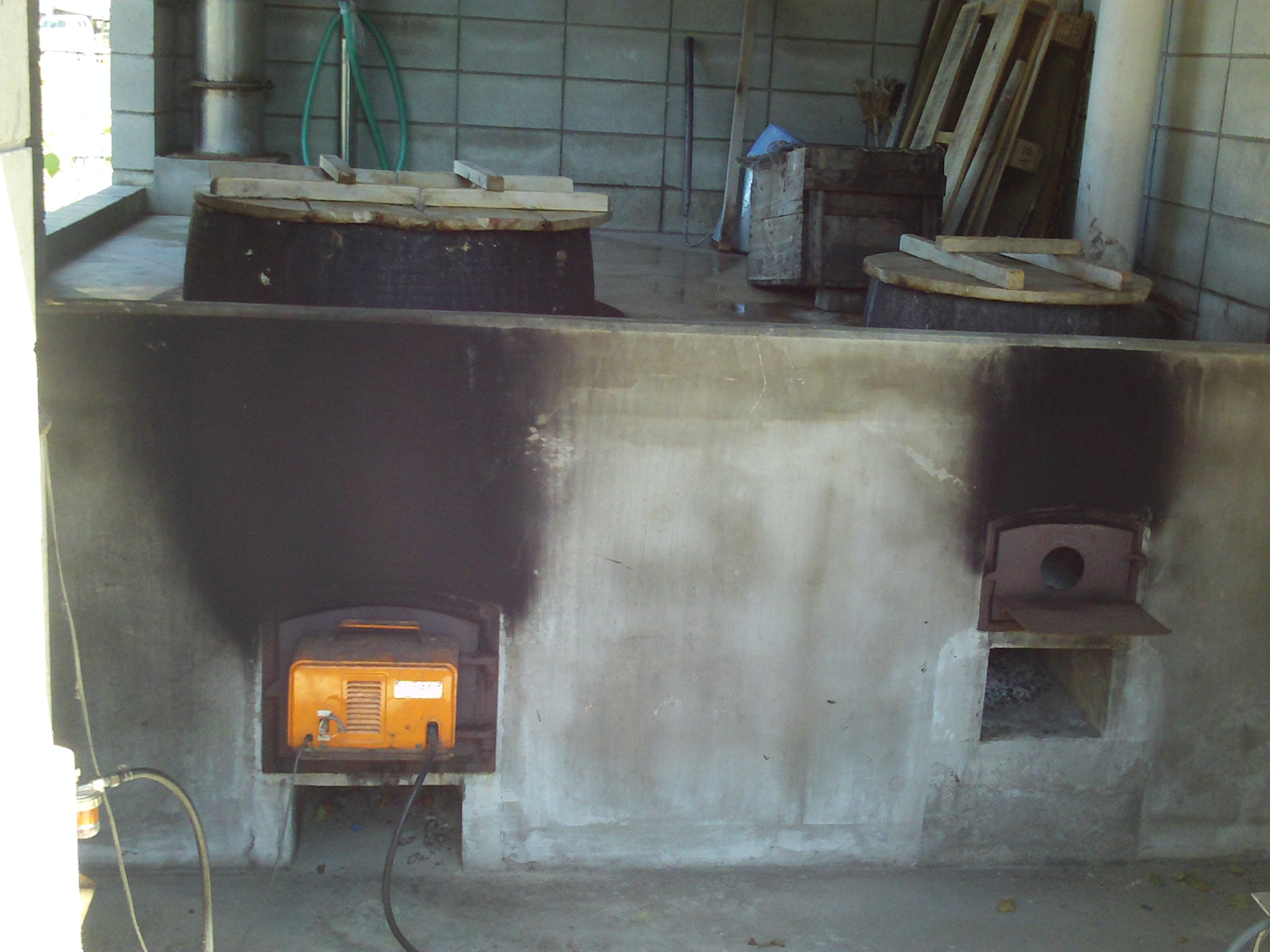
boiling in carbonate of soda
After this process the impurities are taken out by hand in cold water, which is a tedious process. This add to the quality of the paper. If any specks or dust are seen in a sheet of paper it is considered poor quality paper. This work requires patience and perseverance. The same pulp stock is checked at least twice. I have been told it is usually younger people that can keep up with this job due to the long hours in the cold water.
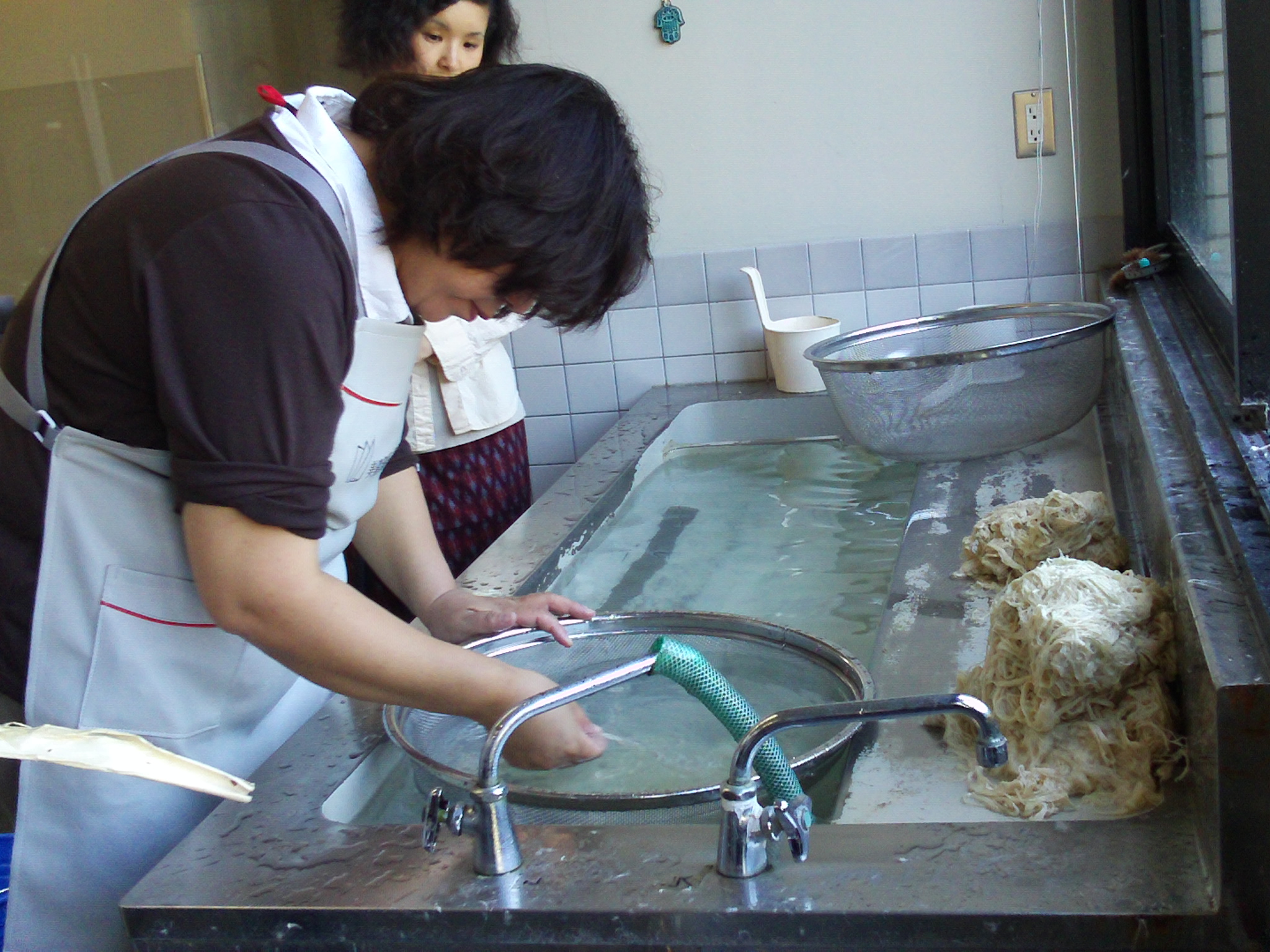
Speck removal
The next step is beating the fiber into a pulp, which used to be done by hand, but these days it is done by a “beater machine”. Beating is a very important mechanical treating process, this gives paper its wide spectrum and variations. The main function of beating is to bruise the wall surrounding the fiber and allow water to permeate the interior of the fibril and cause expansion. The fiber will start to loosen itself. The beaten fibers make contact with each other and as a result the cohesion area enlarges. Openings between fibers decrease and that leads to a high density paper.
Now you are ready to make your sheet of paper. The beaten Kozo pulp are placed in a large vat called a “Sukibune” and is mixed with sticky (snotty) liquid that is made from the root of Tororoaio called Neri. (Tororo-Aoi is called nebishi in Mino). Neri is needed for the following reason, to disperse the fiber in your vat evenly. To make a good sheet of paper the fibers have to be mixed uniformly into the water and the pulp has the tendency to have clumps and Neri takes care of that. Also kozo fiber’s specific gravity is 1.5 times that of water and will sink to the bottom of your vat, Neri prevents that since it is a polysaccharide the same as cellulose. It simultaneously disperse into the water and wraps itself around each fiber because it has such a slimy consistency. Another reason is when you stack your newly made wet paper sheets on top of each other the Neri prevents them from sticking to each other. Each wet paper can be peeled separately from each other to be dried without tearing.
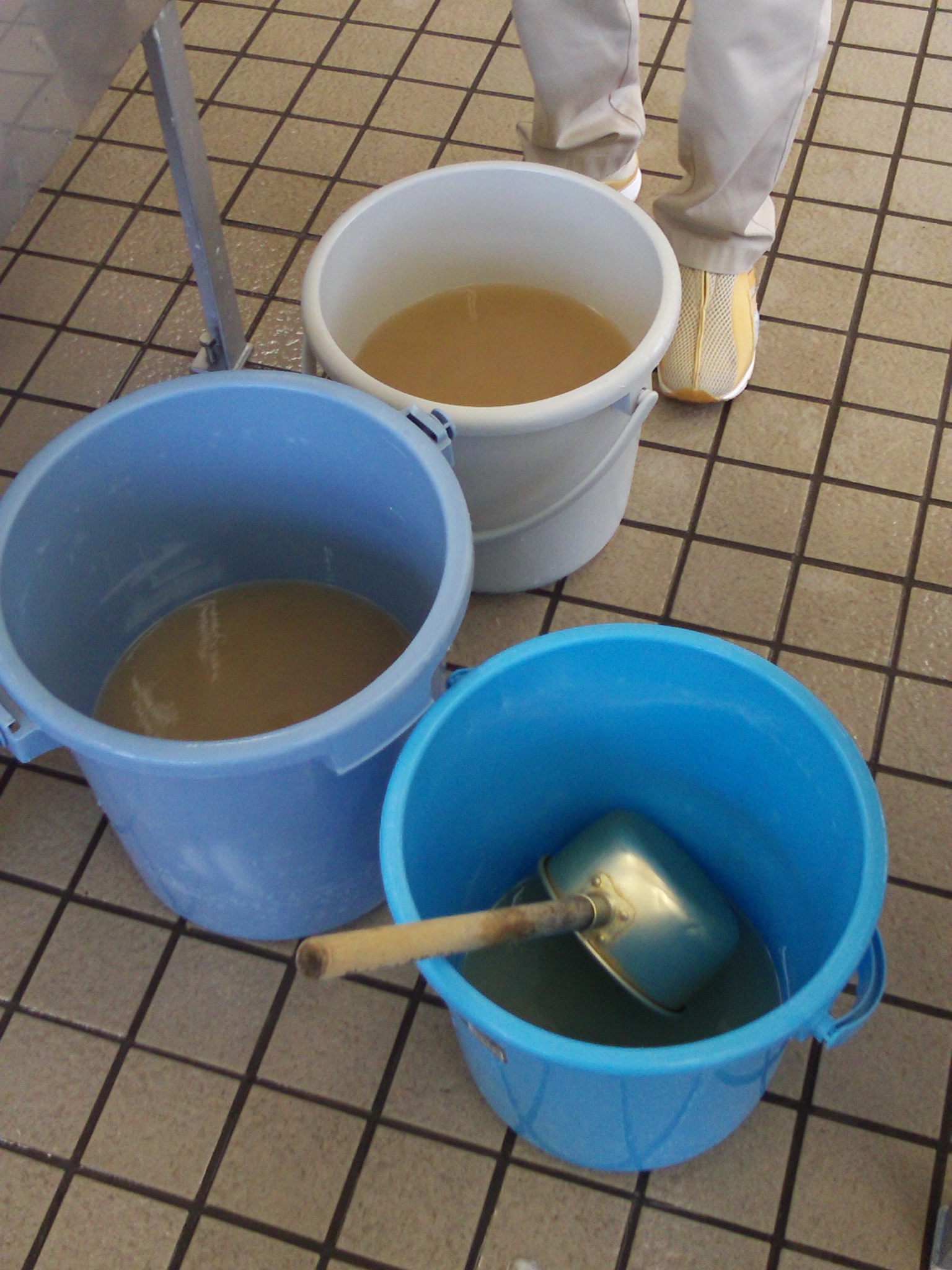
Buckets with ‘Neri’
The Kozo and Neri are mixed REALLY well so that the fibers can intermingle to make nice even paper. Yes, it is hand mixing, you rotate between using a bamboo stick and a wooden frame mixer, it can sometimes take up to 30 minutes of vigorous mixing before the vat is ready. Here we are being taught by Master Washi maker Toshiko Ichihara. She has been a paper maker in Mino for 50 years.
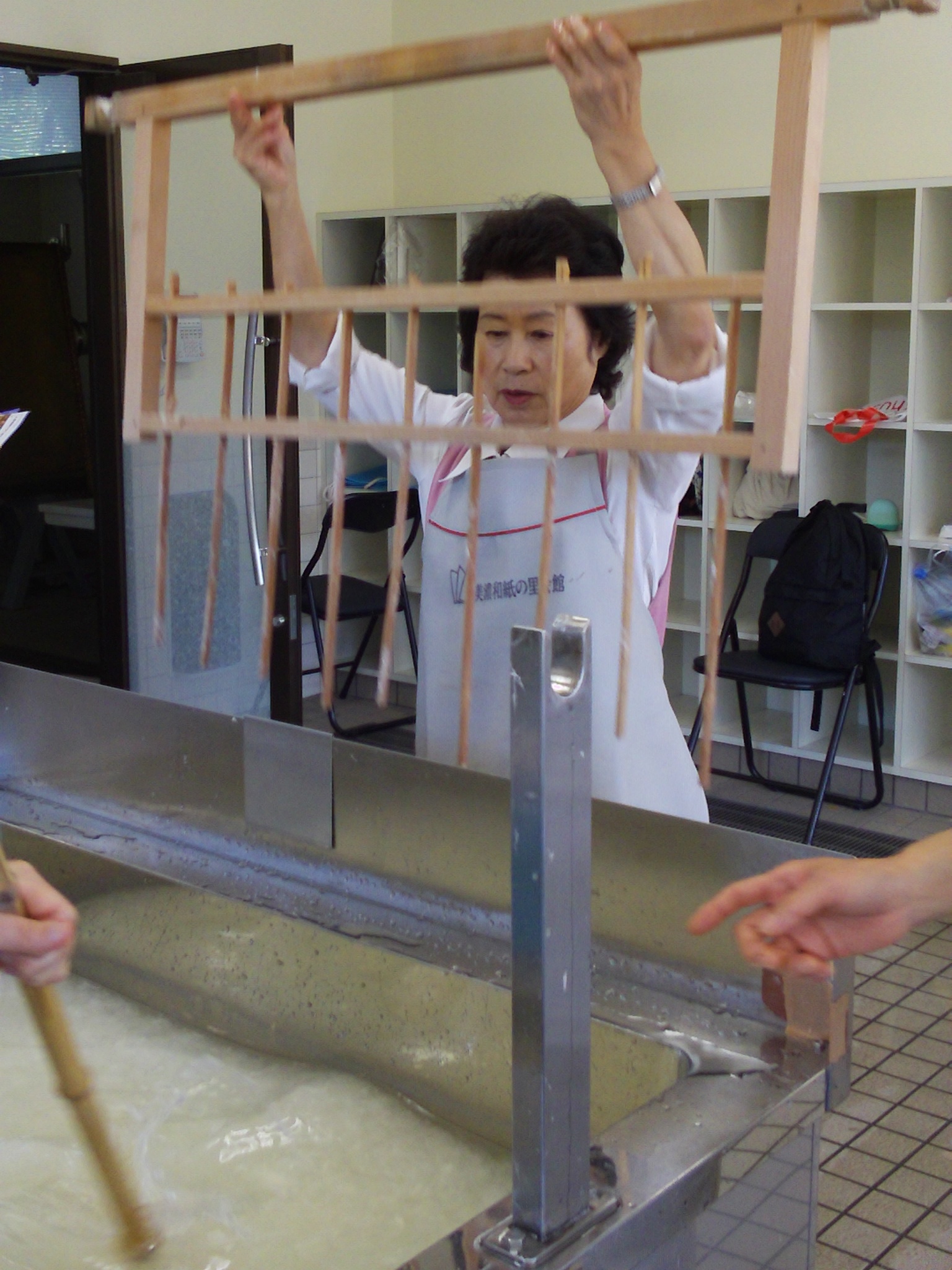
Mixing Paper fibers in a vat.
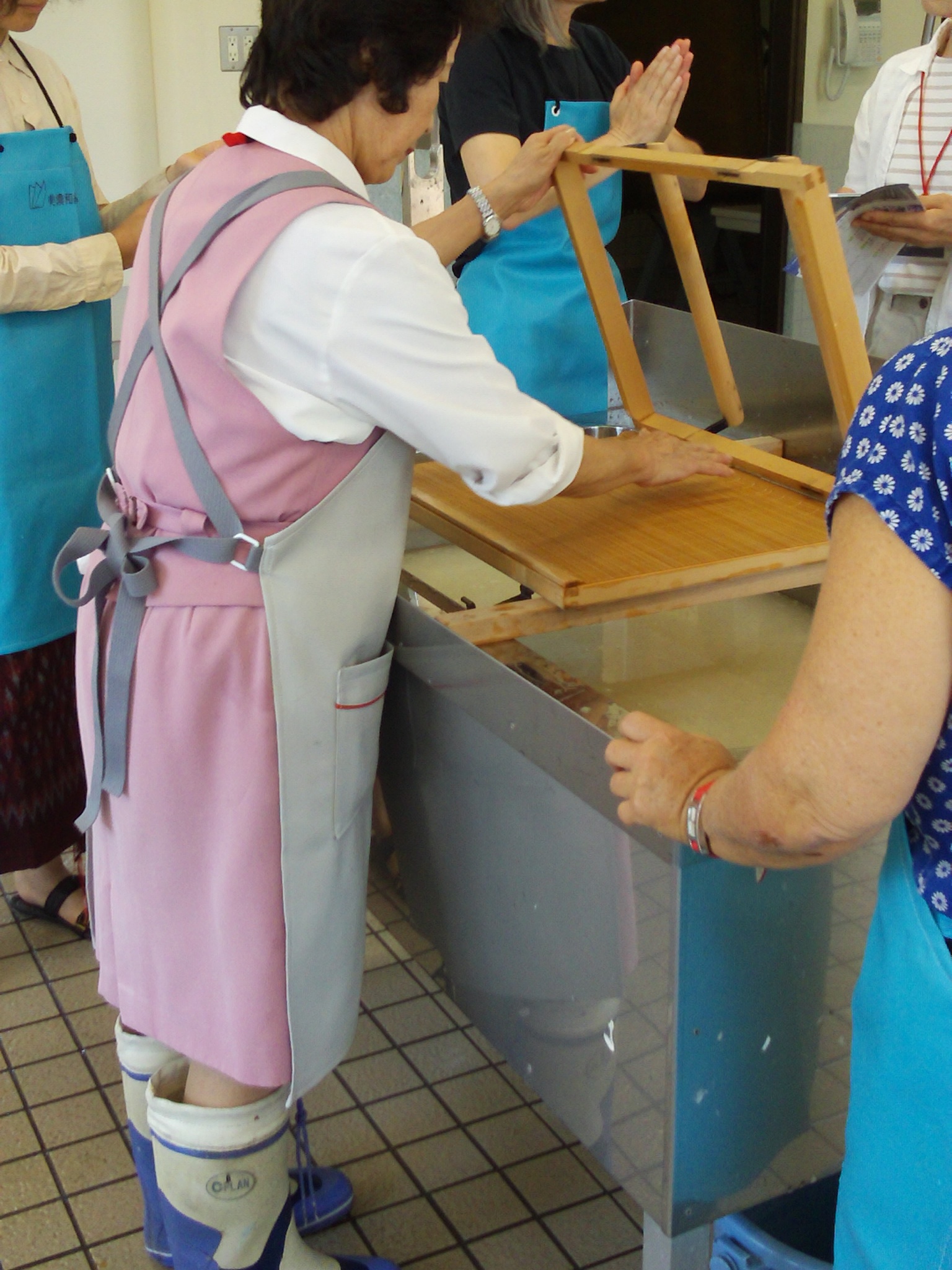
Demonstration by Toshiko Ichihara
The main tools in making paper out of the vat is called a su and a keta. Both are made from wood. The su is the thinly weaved bamboo screen with silk threads that will drain the pulp from the water. The su alone needs a master to make and is a very complicated process. Today there is very few Su makers left and is probably the most expensive tool in Japanese paper making. The Su is hand woven from up to 3000 very fine bamboo splints of equal thickness one at a time into a sheet (the nodes of the bamboo cannot be used so only the part between the nodes.) The thickness of the bamboo splint can between 0.5 and 0.7 millimeter. The silk threads that keep the splints together as treated with Kakishibu (persimmon tannin) The Su are treated with utmost care. Before you start making your paper it should be soaked in clean cold water.
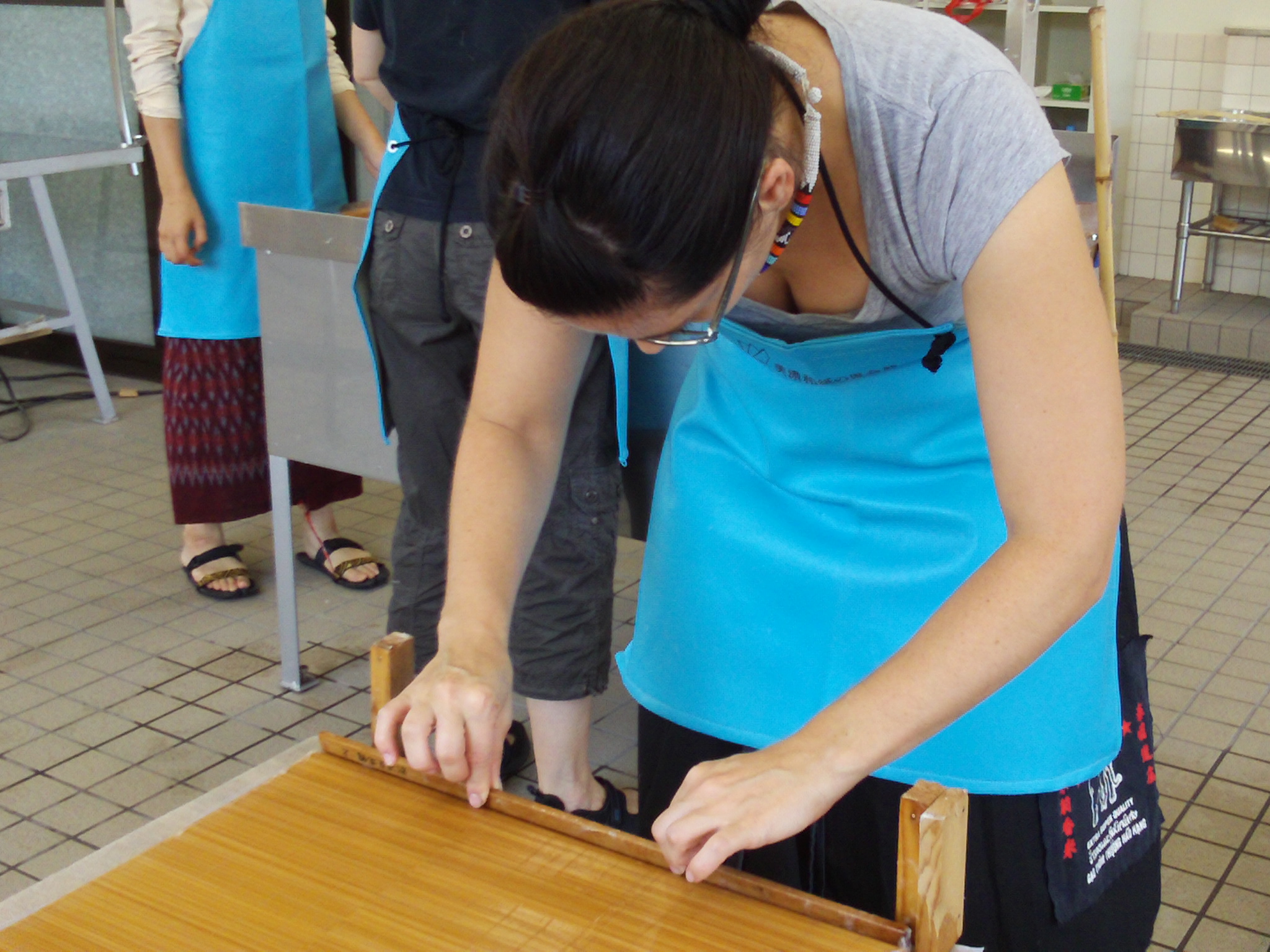
Su being used.
The keta, is the wooden frame the su is inserted into. Making the keta can be just as complicated as making the su. The keta is made out of Hinoki Cypress that is no less than 400 years old. The keta must be light so that once it is filled with water and pulp that it is still manageable and at the same time it should also be strong to withstand the Nagashizuki swinging actions of paper making and the most important part is that it should stay straight and never warped even though it will be constantly soaked with water. To get wood of this utmost quality the Hinoki Cypress has to be dehydrated for several years. This can be another pricey tool.
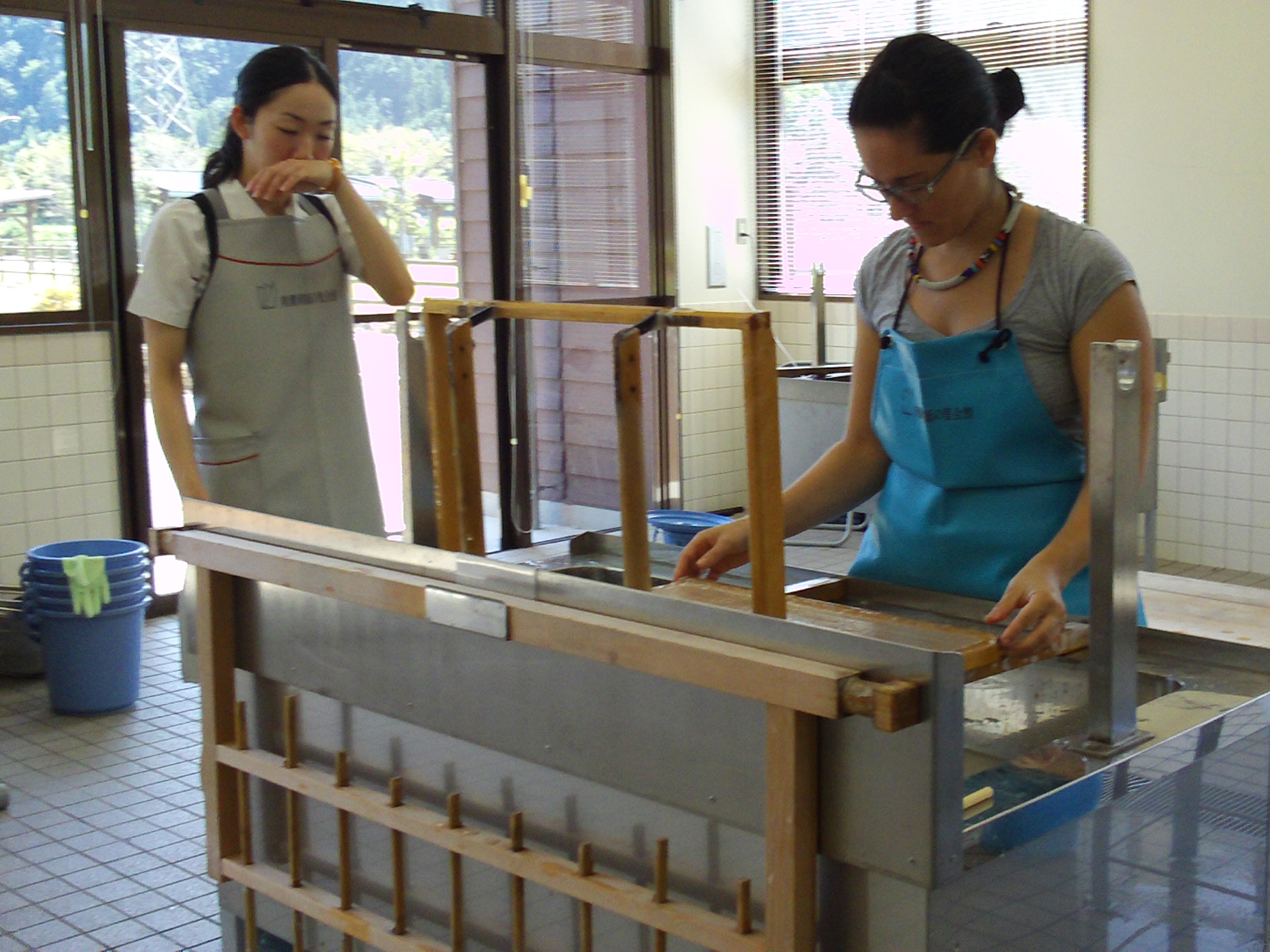
An open keta on vat. (Making paper under the watchful eye of apprentice Paper maker to Toshiko Ichihara, Ayumi Mukaizawa.)
After your paper is made and are stack into a pile it will be placed under a press to squeeze out all the water. This will take up to a day. Each sheet is taken individually of the pile and dried. In the old days this would have taken place naturally in the sun. Each sheet will be peeled and placed on a board or dryer, even though the paper is wet the washi already shows its strength by staying intact. The wet sheets are handled and pasted onto the dryer with a wide brush that is made out of horsehair.
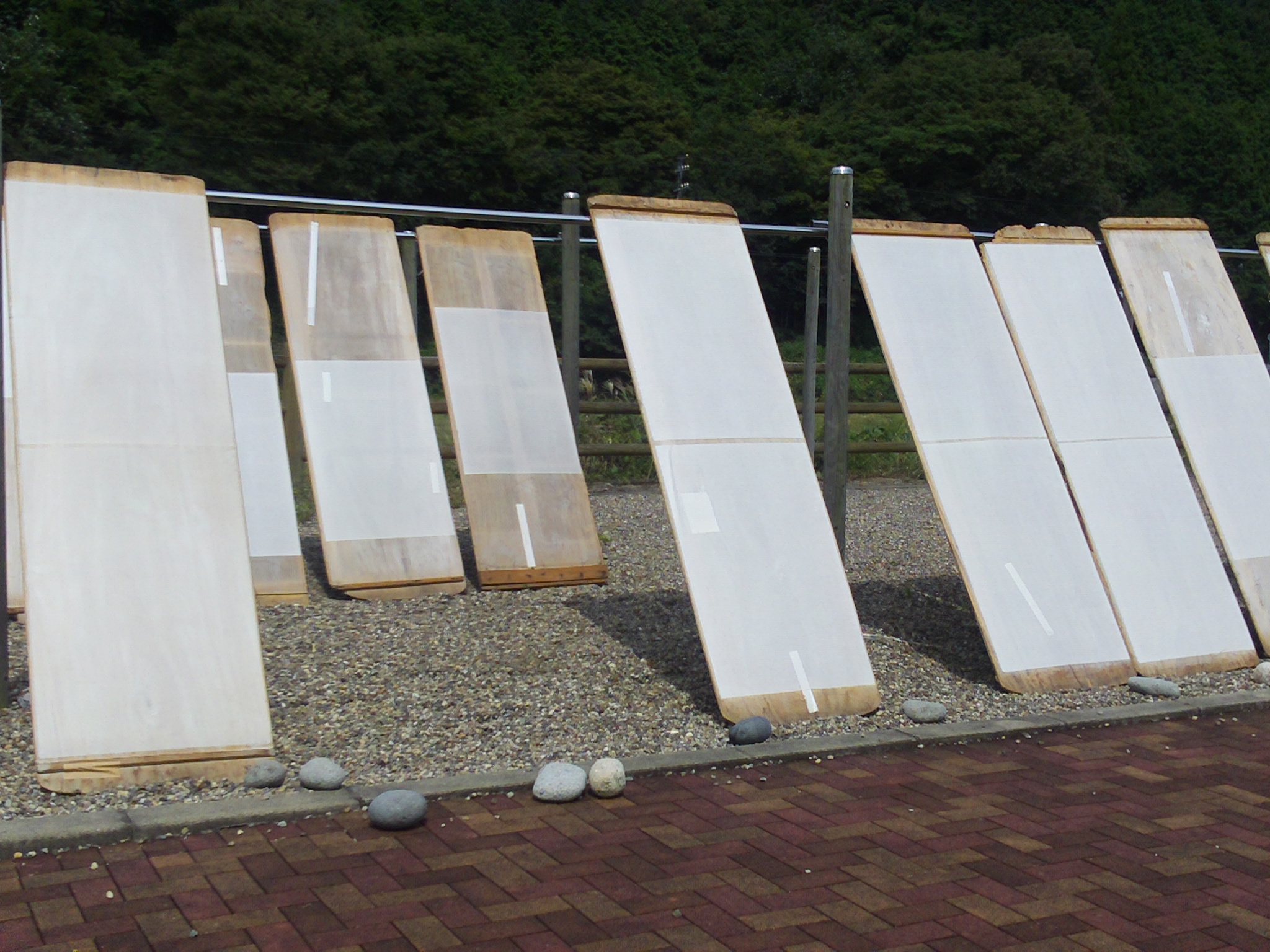
Paper drying in the sun on wooden boards
Today it is placed on a copper heater or a triangle heater that uses steam to dry the paper. It is known that naturally sun dried paper is even stronger than that of steam dried.
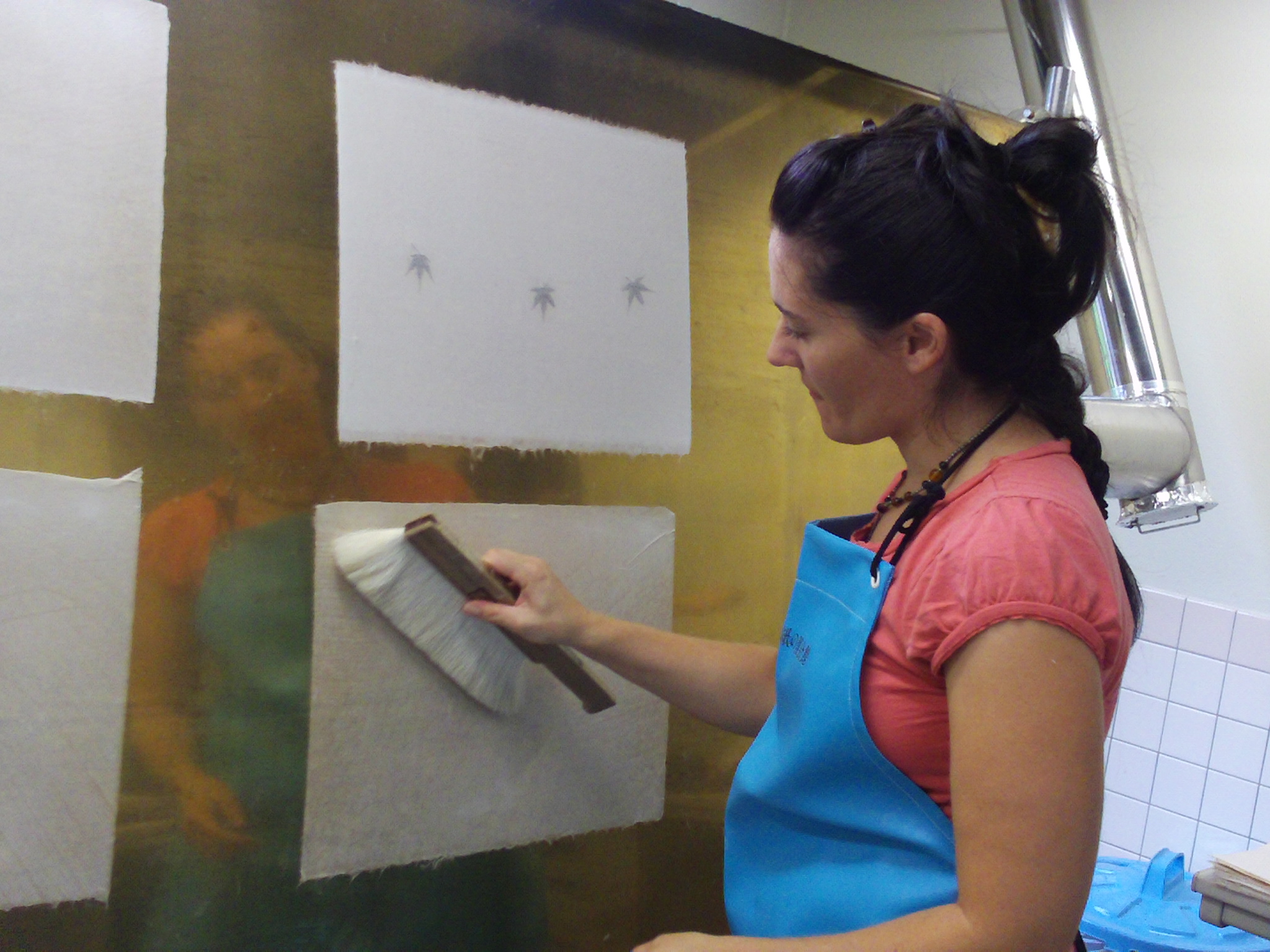
A Copper dryer and brush
This how it looks like when professionals are doing it:
![]()
[blip.tv ?posts_id=2766175&dest=-1]
It is also possible to make larger sheets of Washi where the technique is altered a bit. You can read more about larger washi paper here.
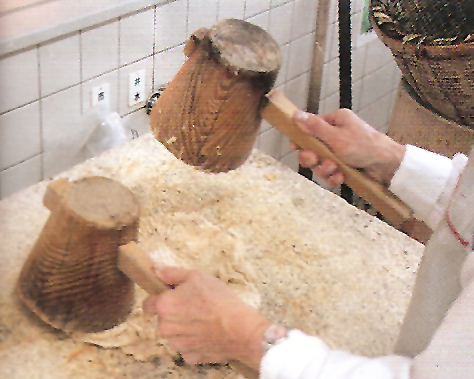


Hey very nice blog!!…..See ya
Your site was extremely interesting, especially since I was searching for thoughts on this subject last Thursday.
I usually don’t post on Blogs but ya forced me to, great info.. excellent! … I’ll add a backlink and bookmark your site.
Linked here by a friend, and this is terrific! (Though, just so you know the kozo is actually nasu rather than naso.) May we link to it from Facebook?
Jessica you may link this.
Japanese can be really tricky! Thanks.
I love it. I especially enjoyed watching the video and felt entranced by the process.
You look completely at home in your element there, Anja.
baie cool!